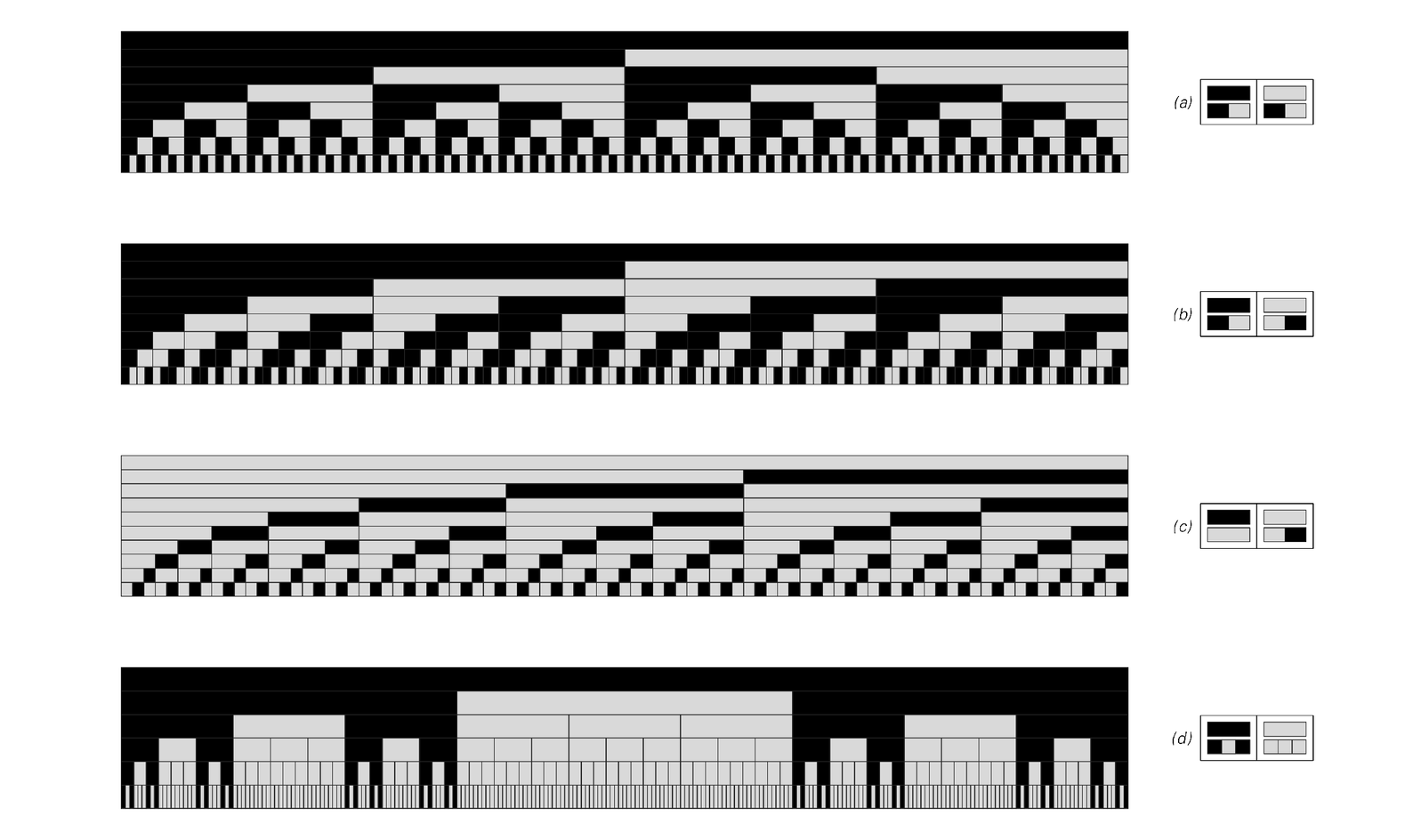The pictures at the top of the next page show a few more examples. And what we see is that in all cases there is obvious regularity in the patterns produced. Indeed, if one looks carefully, one can see that every pattern just consists of a collection of identical nested pieces.
And ultimately this is not surprising. After all, the basic rules for these substitution systems specify that any time an element of a particular color appears it will always get subdivided in the same way.
The nested structure becomes even clearer if one represents elements not as boxes, but instead as branches on a tree. And with this setup the idea is to start from the trunk of the tree, and then at each step to use the rules for the substitution system to determine how every branch should be split into smaller branches.

Examples of substitution systems in which every element is drawn as being subdivided into a sequence of new elements at each step. In all cases the overall patterns obtained can be seen to have a very regular nested form. Rule (b) gives the so-called Thue–Morse sequence, which we will encounter many times in this book. Rule (c) is related to the Fibonacci sequence. Rule (d) gives a version of the Cantor set.



